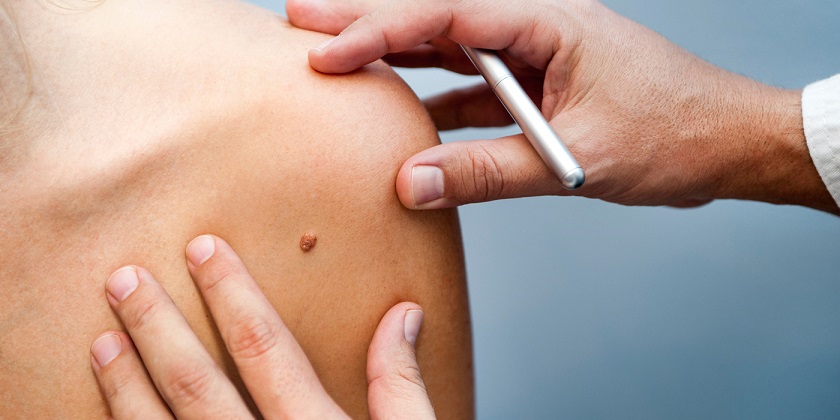- Home
- Skin Tag Treatment

Overview
Skin tags are usually more annoying to look at than anything else, but understanding what they are, and aren’t, can be reassuring. And though what causes skin tags isn’t always known, skin tag treatment is pretty straightforward — they are easily removed.
First, the good news: Skin tags are benign and cause no symptoms. These harmless growths of skin can be right on the skin surface or seem to sprout from a thin stalk of skin and hang off the body. Also called cutaneous tags, soft fibromas, acrochordons, and fibroepithelial polyps, skin tags are mostly flesh-colored growths, although some may be darker in color.
Skin tags are small, usually measured in millimeters, but can grow to a half-inch in length. A skin tag may start to develop without you’re even noticing. Once formed, they typically don’t get any bigger. They can show up virtually anywhere on the body but are most often on the eyelids, the neck, the groin area, and in the armpits — basically on areas of the body with folds. You may have just one or two or many, and they might be in isolated spots or in a group with many skin tags.
What Causes Skin Tags?
Skin tags are very common. About 25 percent of people will develop skin tags, usually starting after the age of 50. Skin tags are more common among people with diabetes as well as people who are overweight or obese — conditions that often go together.
The friction created by skin rubbing against skin, a side effect of being overweight, is what causes skin tags in certain people, and explains why skin tags often grow in body folds.
Repetitive friction and wearing tight clothes may contribute to skin tags in people who are overweight. According to a medical paper written by dermatologists in Spain, an obese patient, whose job required repeating lifting of her arms, developed a pattern of skin tags along with her bra straps from the constant friction. Avoiding tight clothing if you are overweight is suggested.
Skin Tag Treatment Options
Depending on where your skin tags are located, you might not choose any skin tag treatment — out of sight can lead to out of mind. However, you might want to seek skin tag treatment for cosmetic reasons if, for instance, they are on your eyelids and detract from your appearance. Another reason to have a skin tag removed is if it is in an area that gets a lot of friction, even just from wearing clothes, causing irritation and bleeding.
Skin tag treatment is relatively simple. Options include cryosurgery — removing the tag by super freezing the skin — and cautery, burning off or destroying the tissue with heat. If the skin tag is indeed hanging, cutting it off with medical scissors is another option.
Because skin tags are considered harmless, the tissue is not usually analyzed after it’s removed the way a typical tumor would be. The exception is if a skin tag occurs on a child because it could be the beginning of a condition called nevoid basal cell carcinoma syndrome, a rare genetic condition involving skin cancer.
There is no recovery time needed, and skin tag treatment usually leaves no trace of the tag — there shouldn’t be any scarring. However, although that skin tag doesn’t grow back, new skin tags may form.
While not at all dangerous, skin tags can be a nuisance or cosmetic woe. But if yours don’t bother you, it’s perfectly fine to ignore them. One word of caution: As with any changes on your skin, if the appearance of a skin tag changes has it looked at by your doctor or dermatologist.

